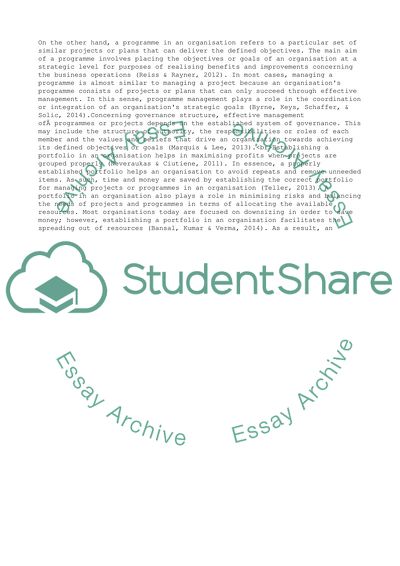Cite this document
(“Discuss the advantages and disadvantages of establishing a Portfolio, Essay”, n.d.)
Discuss the advantages and disadvantages of establishing a Portfolio, Essay. Retrieved from https://studentshare.org/management/1682168-discuss-the-advantages-and-disadvantages-of-establishing-a-portfolio-programme-and-project-governance-structure-within-an-organisation-considering-hsbc-or-apple-evaluate-the-effectiveness-of-their-governance-structure-for-projects-and-programmes-inclu
Discuss the advantages and disadvantages of establishing a Portfolio, Essay. Retrieved from https://studentshare.org/management/1682168-discuss-the-advantages-and-disadvantages-of-establishing-a-portfolio-programme-and-project-governance-structure-within-an-organisation-considering-hsbc-or-apple-evaluate-the-effectiveness-of-their-governance-structure-for-projects-and-programmes-inclu
(Discuss the Advantages and Disadvantages of Establishing a Portfolio, Essay)
Discuss the Advantages and Disadvantages of Establishing a Portfolio, Essay. https://studentshare.org/management/1682168-discuss-the-advantages-and-disadvantages-of-establishing-a-portfolio-programme-and-project-governance-structure-within-an-organisation-considering-hsbc-or-apple-evaluate-the-effectiveness-of-their-governance-structure-for-projects-and-programmes-inclu.
Discuss the Advantages and Disadvantages of Establishing a Portfolio, Essay. https://studentshare.org/management/1682168-discuss-the-advantages-and-disadvantages-of-establishing-a-portfolio-programme-and-project-governance-structure-within-an-organisation-considering-hsbc-or-apple-evaluate-the-effectiveness-of-their-governance-structure-for-projects-and-programmes-inclu.
“Discuss the Advantages and Disadvantages of Establishing a Portfolio, Essay”, n.d. https://studentshare.org/management/1682168-discuss-the-advantages-and-disadvantages-of-establishing-a-portfolio-programme-and-project-governance-structure-within-an-organisation-considering-hsbc-or-apple-evaluate-the-effectiveness-of-their-governance-structure-for-projects-and-programmes-inclu.


